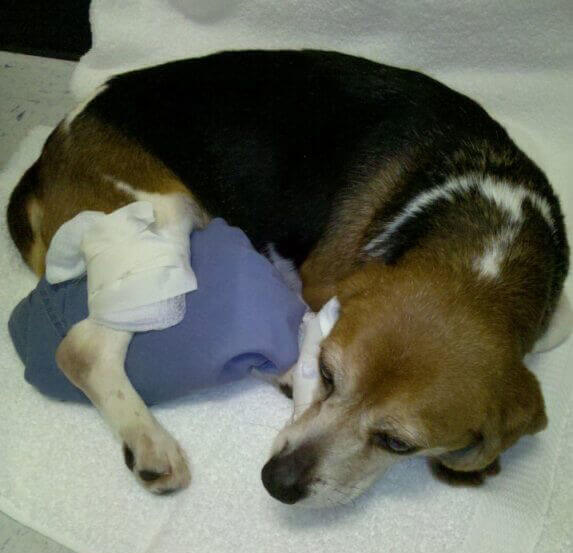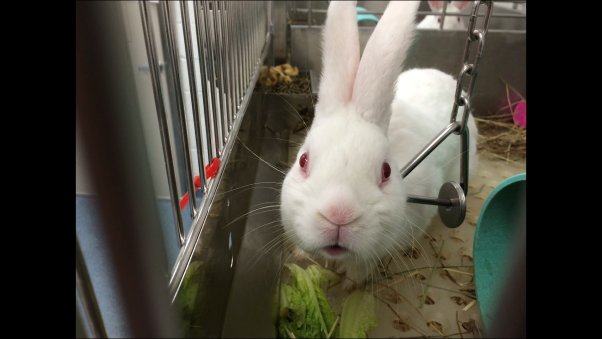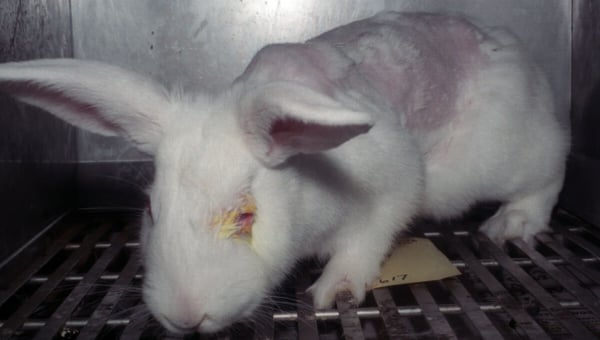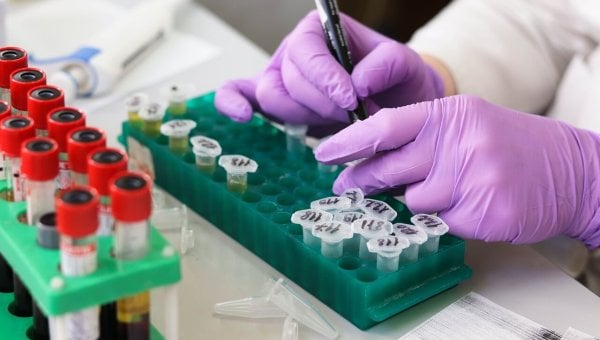Viral Experiments on Animals Highlight a Cruelty Epidemic in Tax-Funded Laboratories
In laboratories throughout the U.S., experimenters are injecting animals with viruses or other pathogens, or exposing them to deadly infectious diseases, and then leaving them to suffer from excruciating symptoms—all without any pain relief to ease their agony.
How Is This Allowed?
In its annual report, the U.S. Department of Agriculture (USDA) categorizes experiments that cause animals pain or distress without pain relief simply as “Column E.”

To conduct Column E tests, animal experimentation facilities merely fill out some paperwork, submitting forms to the USDA at the end of the year explaining why animals in their care were denied pain relief. And the details don’t matter, apparently. As long as the form is submitted, experimenters are free to expose thinking, feeling animals to Ebola, coronaviruses, and more, then watch as they suffer from symptoms ranging from fever and diarrhea to seizures and death.
Then those experiments are tucked away in the facility’s annual report under Column E.
Why Is This Allowed?
Column E experiments are sometimes done under the misguided belief that providing pain relief can interfere with the objectives of the experiment. But the opposite is true: Withholding pain relief can affect the results. At other times, experimenters withhold pain relief due to cost or expedience. In all cases, it’s unethical.

Animals are not miniature humans, and consequently, they’re not good “models” for studying human diseases. A report by the National Institutes of Health identified that infectious disease research on chimpanzees, humans’ closest living genetic relatives, “rarely accelerated new discoveries or the advancement of human health for infectious diseases.” If experimenting on our closest genetic relatives has not advanced our understanding of infectious diseases, it’s even less likely that infecting animals more distantly related to humans will provide meaningful benefits.
Where Does This Happen? Everywhere Hamsters, rabbits, monkeys, ferrets, bats, guinea pigs, and many other animals are subjected to infectious disease experiments without pain management. These examples are a mere sampling of the pain—without relief—that animals experience nationwide, from university and government laboratories to contract research facilities.
Click here to read about them.
- Battelle Memorial Institute
- Experimenters infected 134 guinea pigs with a type of bacteria that causes anorexia, fever, lethargy, weakness, and respiratory distress.
- Experimenters infected 161 rabbits with a type of bacteria that causes lethargy, respiratory distress, seizures, and sudden death.
- Experimenters infected 12 endangered monkeys with a type of bacteria that causes anorexia, fever, lethargy, weakness, and respiratory distress.
- Experimenters infected 32 monkeys with a type of bacteria that causes hunched posture, lethargy, weakness, respiratory and fecal abnormalities, mouth and nose discharge, and unresponsiveness.
- Boston University
- Experimenters infected 598 hamsters with a coronavirus.\
- Experimenters infected 73 monkeys with a virus that causes fever and severe discomfort.
- Centers for Disease Control and Prevention
- Experimenters infected ferrets with influenza viruses that cause severe suffering, death, nasal discharge, and weight loss.
- Experimenters infected fruit bats with a nasty virus that causes severe illness. One bat died from the infection and others experienced lethargy and weight loss.
- Experimenters infected hamsters with a deadly virus that causes severe brain inflammation and respiratory disease. Thirty animals died from the infection, and others experienced neurological distress and weight loss.
- Duke University
- Experimenters infected 86 ferrets with influenza and 36 hamsters with a coronavirus, potentially causing them to suffer from a lack of appetite, weight loss, elevated body temperature, respiratory distress, and lethargy.
- Emory University
- Experimenters infected 24 hamsters with a coronavirus and exposed them to a range of temperature conditions as low as 41 degrees Fahrenheit.
- Georgia State University
- Experimenters infected 15 ferrets with influenza, causing airway mucus production, lethargy, weight loss, and elevated body temperature.
- Experimenters infected 158 ferrets with a coronavirus, causing increased body temperature, lethargy, sneezing and nasal discharge, and pink eye.
- Experimenters exposed 18 ferrets to the influenza virus, causing discomfort and sickness including pain, distress, lethargy, and anorexia.
- Johns Hopkins University
- Experimenters force-fed 16 piglets a formula six times a day for five days, inducing a disease that caused intestinal inflammation and tissue death.
- National Institutes of Health
- Experimenters infected eight guinea pigs with a virus that damages blood vessels and hampers the blood’s ability to clot. They endured ruffled coats, dehydration, discomfort, shortness of breath, and weight loss.
- Texas Biomedical Research Institute
- Experimenters exposed 124 hamsters to a coronavirus.
- Experimenters injected 22 monkeys with viruses that damage blood vessels and hamper the blood’s ability to clot. Nine of these monkeys were long-tailed macaques, an endangered species.
- Experimenters infected five monkeys with tuberculosis.
- Experimenters infected 16 monkeys with a coronavirus.
- University of Louisville
- Experimenters infected 148 hamsters with a coronavirus, causing weight loss, ruffled fur, hunched posture, lethargy, and rapid breathing.
- University of Maryland
- Experimenters infected three guinea pigs with a nasty type of bacteria that can cause intestinal inflammation and bloody diarrhea.
- Experimenters infected 63 guinea pigs with a type of bacteria that causes Lyme disease.
- Experimenters exposed 48 hamsters to the virus that causes COVID-19.
- University of Massachusetts
- Experimenters gave 95 guinea pigs a deadly infection that causes weight loss, dehydration, and lethargy.
- University of New Mexico
- Experimenters infected 12 rabbits with a virus that caused fever, lack of appetite, swelling at the site of injection, and ear and nose swelling. Nine of the rabbits were killed.
- University of Tennessee
- Experimenters infected 80 hamsters with a coronavirus, potentially causing a lack of appetite, weight loss, lethargy, difficulty moving, and permanently closed eyes. They gave some of the animals a lethal dose.
- University of Texas–Galveston
- Experimenters infected 348 guinea pigs with a disease that causes fever, rough hair–coat, lethargy, paralysis, eye discharge, urine retention, anorexia, weight loss, fever, flu-like symptoms, rashes, brain inflammation, respiratory distress, blood vessel damage, bleeding, and death.
- Experimenters infected 472 hamsters with a disease that causes goosebumps, inflamed muscles, brain and liver inflammation, weight and muscle loss, lymphoid tissue loss, fever, ruffled fur, lethargy, respiratory distress, and death.
- Experimenters infected 30 rabbits with a bacterial disease that causes rapid and labored breathing, fever, lethargy, decreased appetite, unresponsiveness, and death.
- Experimenters infected 243 primates with a disease that causes lack of appetite, fever, pneumonia, rashes, discomfort, flu-like symptoms, brain inflammation, respiratory distress, and death.
- Yale University
- Experimenters exposed 120 hamsters to an infectious disease, causing weight loss, lethargy, jaundice, and a lack of interest in eating, drinking, and grooming.
What You Can Do to Help
Please TAKE ACTION by telling the National Institutes of Health (NIH) to stop funneling tax dollars into cruel, painful Column E animal experiments:
And if you’re a U.S. resident, please take an additional action for animals by supporting PETA’s Research Modernization Deal, which outlines a comprehensive strategy for replacing all experiments on animals with more effective, human-relevant, non-animal methods:



